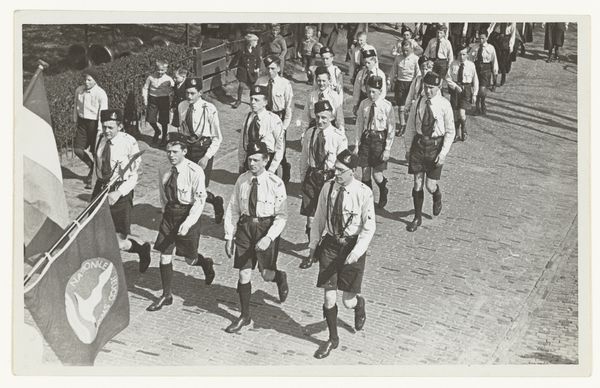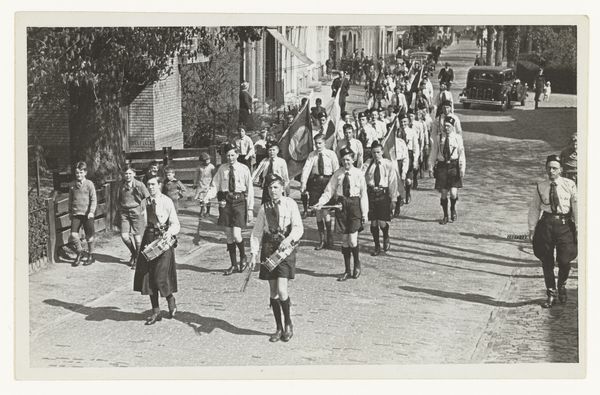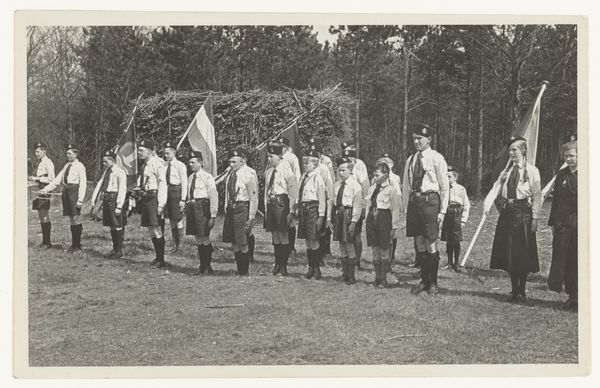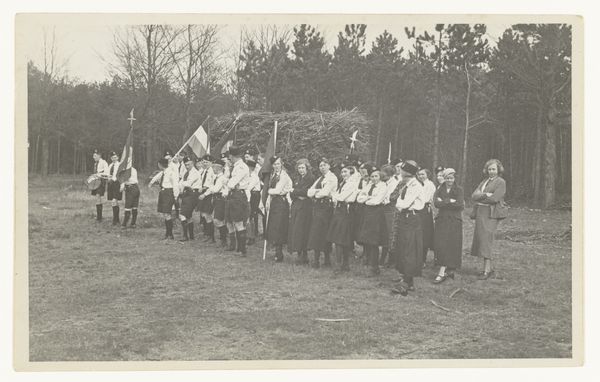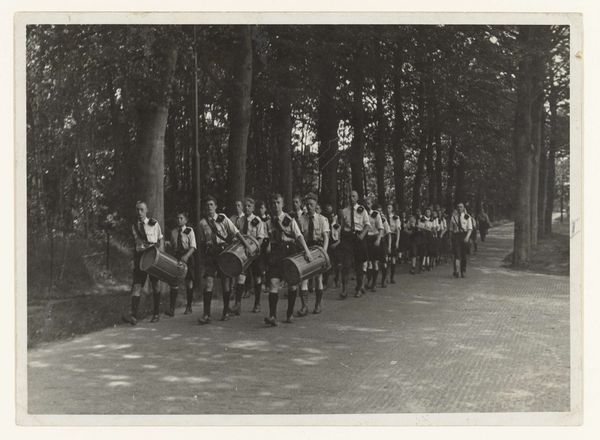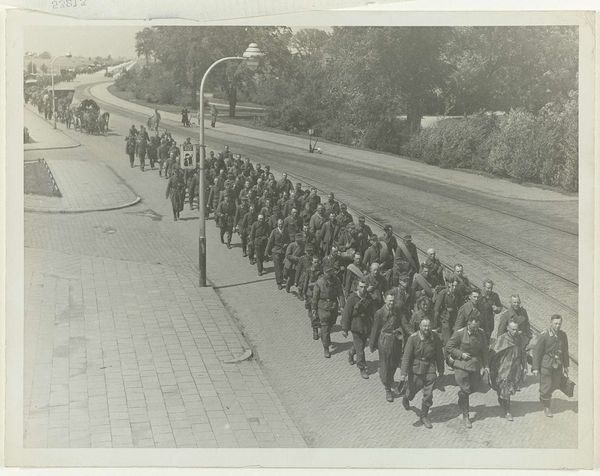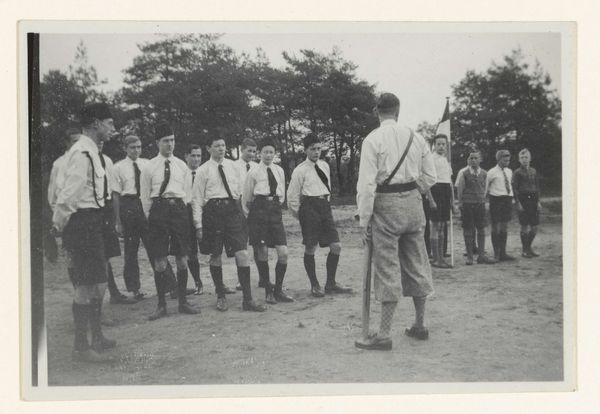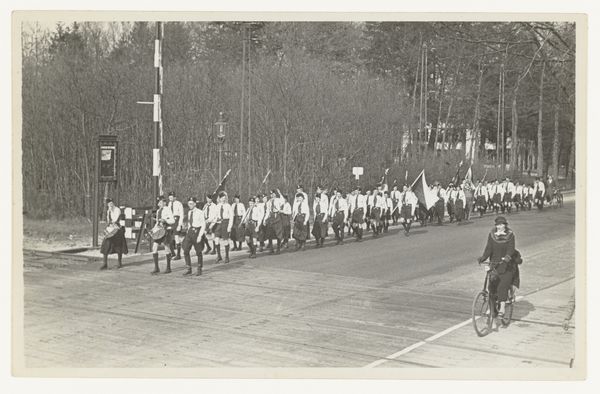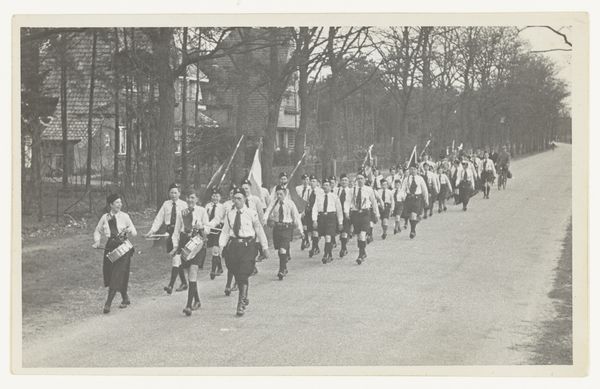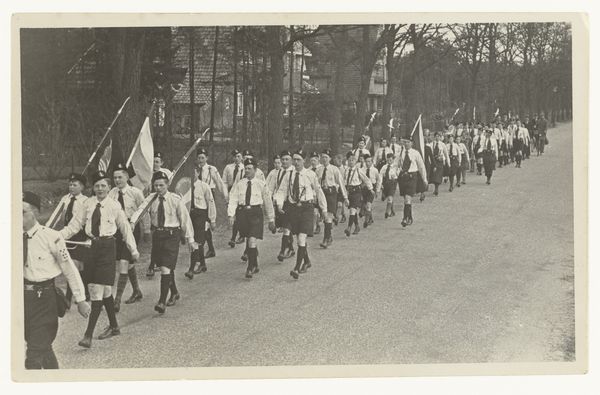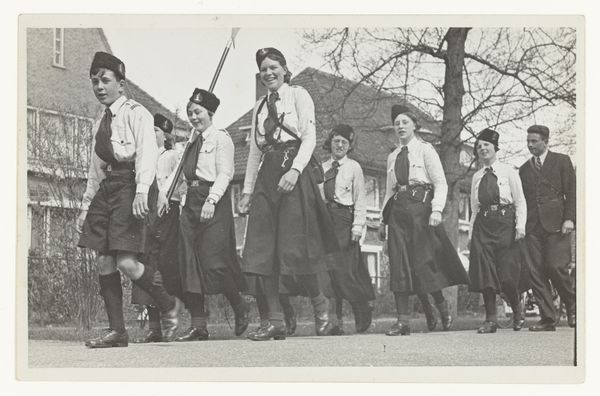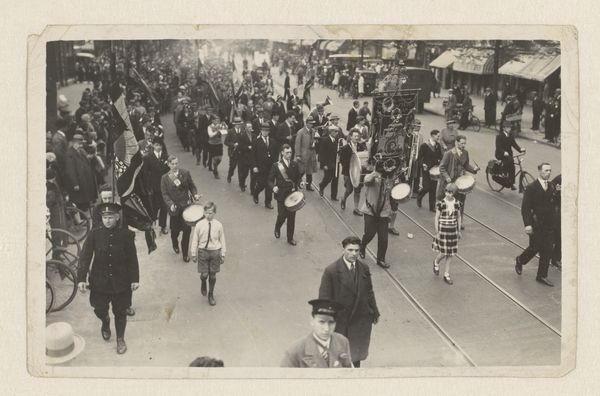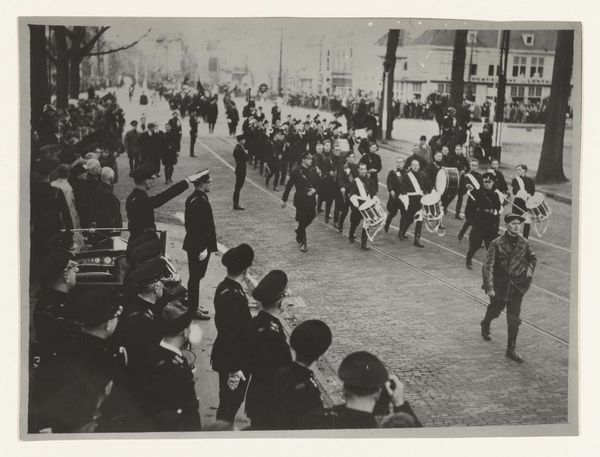
print, photography
#
print photography
# print
#
street-photography
#
photography
#
modernism
Dimensions: height 8.5 cm, width 13.5 cm
Copyright: Rijks Museum: Open Domain
Curator: Looking at this image by J. Otto, titled "Optocht Jeugdstorm," made sometime between 1935 and 1937, my initial sense is, well, constrained. A sort of regimented march into something unknown. What's your impression? Editor: It's undeniably eerie. A feeling of youthful purpose perverted, almost. It makes me think of tin soldiers, a grim fairy tale unfolding in broad daylight. All these fresh young faces marching lockstep towards what, exactly? What are the materials we are dealing with here, technically? Curator: Technically, we have a gelatin silver print. Its materiality gives the photograph an air of immediacy. These materials allowed for mass production, so prints like these likely circulated widely as both propaganda and documentary evidence. I think we can trace their journey by assessing the social context here. Editor: It’s that contrast, the crisp, almost sterile aesthetic coupled with the dark subject matter that unsettles me the most. You get a feeling about the socio-political currents just beneath the surface. What were these kids thinking? Did they even have a choice? It speaks volumes, silently. Curator: Precisely, and considering the socio-political climate in the Netherlands during those pre-war years, this photograph raises questions about youth movements, political indoctrination, and the use of photography in shaping public opinion. This looks more or less staged, but is it staged to document, or to coerce a certain perspective? I see a photograph capturing and subtly perpetuating a narrative, but your emphasis lies elsewhere? Editor: It’s as if the print itself absorbs some of the weight of their unspoken future, turning the very paper somber. Thinking about the process almost gives the image a kind of ghostly authority. It's unsettling that even in the photographic material, we sense the artist's silent awareness of where this all could lead. It’s heavier than paper, I'll say. Curator: Indeed, tracing the image through its physical presence reveals how the past can still imprint itself. Editor: So here we stand, witnessing not just an image, but an echo—a murmur of those marching feet on cold pavement. Art as artifact, echoing the long and complicated tale of history.
Comments
No comments
Be the first to comment and join the conversation on the ultimate creative platform.
